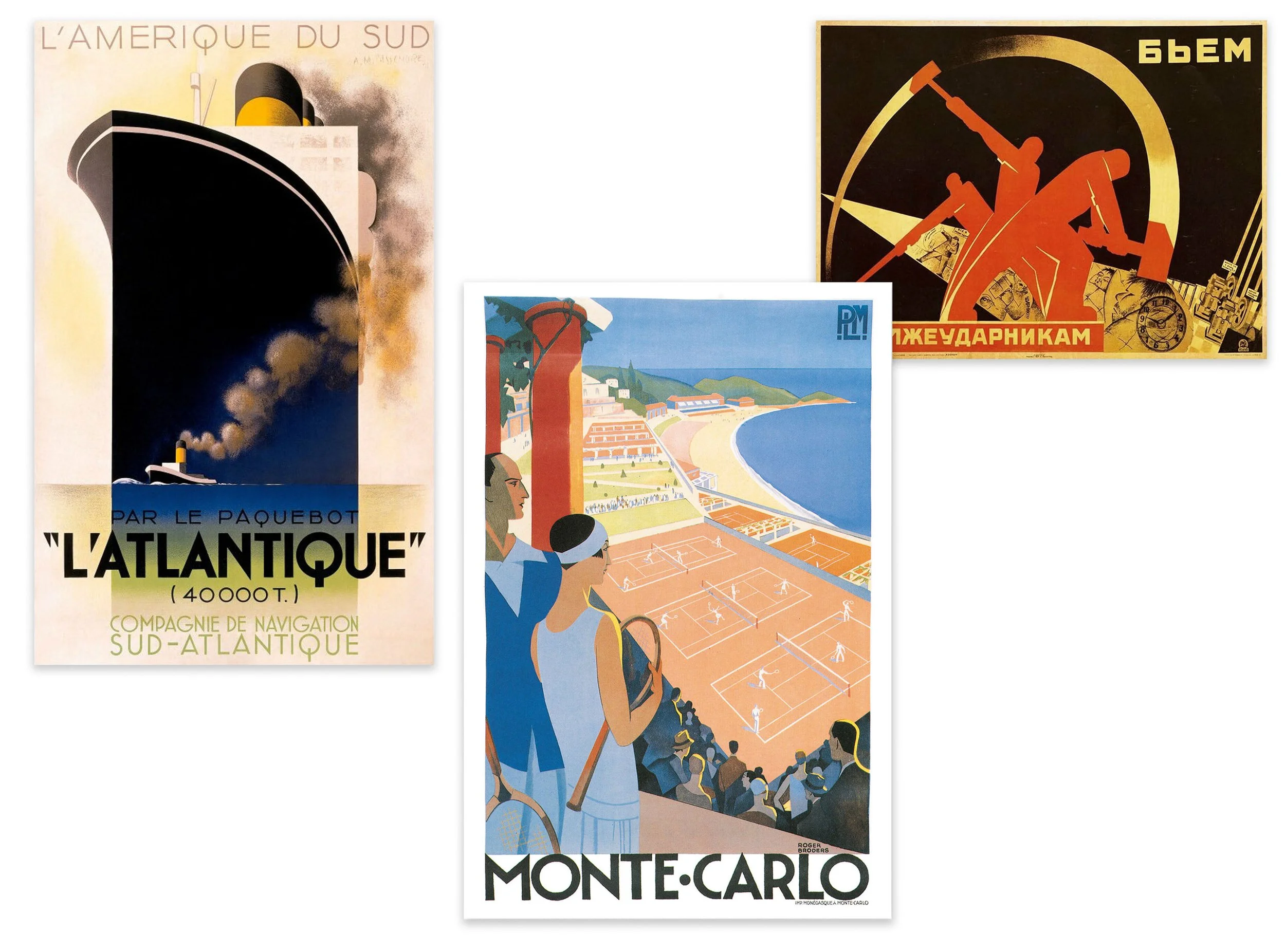What is Art Deco?
Art Deco emerged in France in the early twentieth century and reached its height at the 1925 Exposition Internationale des Arts Décoratifs in Paris. It combined geometry, order, and ornament with modern materials and printing technology, influencing architecture, fashion, and especially poster illustration. Advances in colour lithography and offset printing made it possible to produce bold, accessible artwork for mass audiences across Europe, Asia and America.
The defining features of Art Deco poster art are strong contrast, geometric composition, flat blocks of colour, controlled gradients, and the seamless integration of typography into the design – type as image, not afterthought. Artists such as A. M. Cassandre and Roger Broders transformed commercial and travel posters into modern icons, while political artists used the same visual grammar to communicate ideology and aspiration.
Interesting fact: Art Deco as a name was only coined in the 1960s, following a major Paris retrospective of early-20th-century design. In the 1920s and 1930s, the style was more widely referred to as Style Moderne.
Today, Art Deco illustration endures as a universal design language – elegant, precise, and timeless in its balance of clarity and style.
